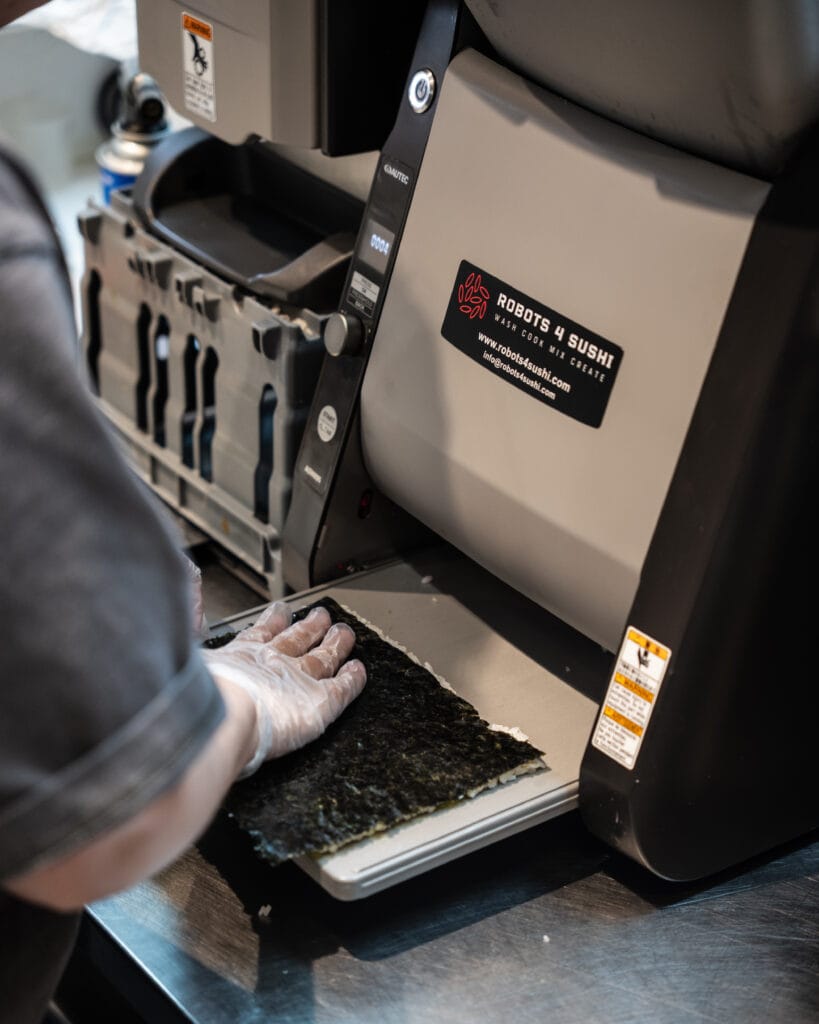

Understanding Technology Behind Automated Sushi Preparation
Sushi robots are specialized kitchen machines applied to automate various stages of the sushi manufacturing process. Although sushi has traditionally been prepared by hand by trained chefs, the demand for high-volume, high-quality sushi—particularly in restaurants, supermarkets, and catering businesses—has put pressure on robotic solutions. Such machines are favorable to efficiency, standardization, and sanitation, and therefore it is a valuable asset in today’s food service and food manufacturing settings.
This piece examines the nature of sushi robots, how they work, where they are used, and why they are being adopted by the culinary industry more and more.
What is a Sushi Robot?
A sushi robot is an automated machine with a computer system that can do one or more of the following:
Making nigiri rice balls
Preparation of maki roll rice sheets
Rolling and cutting maki rolls
Mixing and cooling sushi rice
Others do one task, while others are multifunctional and combine a number of steps into one process. These are usually small, programmable, and simple to clean, and thus perfectly suitable for small restaurants as well as industrial kitchens on a large scale.
How Sushi Robots Work!
Each sushi robot is made to do one thing and does it by using mechanical and electronic components that mimic hand technique. For example:
Nigiri robot presses cooked sushi rice into uniformly shaped rice balls. These are pushed out singly onto a tray or conveyor to be topped with fish or other ingredients.
Sheet rice maker spreads a measured amount of rice uniformly onto a sheet of seaweed (nori), creating the base layer of maki rolls. Sheet thickness and width can typically be regulated.
A roll-former is fed a completed nori sheet and rolls it into a cylindrical shape with tightness. Some machines also cut the rolls into equal slices using automated blades.
Temperature sensors, pressure controls, and portion sizes ensure consistent output. Nearly all machines are simple to use with digital interfaces and minimal setup time.
Common Applications
Sushi robots have wide application in many commercial settings:
Restaurants and fast-casual chains: Used to support kitchen staff in peak volumes, with continuous output and reduced time spent on repetition.
Supermarkets and convenience stores: Enable in-store preparation of pre-packaged sushi with consistent quality and presentation.
Catering companies: Enable efficient production of high volumes for catering to events, conferences, or meal programs.
Industrial food manufacturing: Integrated into process lines for frozen or ready-to-eat sushi products, with stringent hygiene controls and high batch capacities.
These machines are not typically used in sushi restaurants serving high-end fare where handcrafted sushi is the focus of the customer experience, but increasingly they are used where speed, volume, and consistency are top priority.
Benefits of Sushi Robots
1. Consistency
One of the biggest challenges of preparing food is to ensure uniformity so that all the dishes are of the same level. Sushi robots eliminate variation by using calibrated mechanisms and molds to prepare rice and rolls that are of the same size, weight, and appearance.
2. Time Efficiency
Manual sushi preparation is time-consuming. Automating tasks like rice ball forming or sheet spreading saves significant time, especially in high-demand environments. Some machines can produce hundreds of units per hour, allowing businesses to meet volume demands without expanding staff.
3. Labor Optimization
Sushi chefs require specialized training, and shortages of properly trained staff are a common issue across the food sector. Sushi robots reduce dependency on trained staff for tasks that don’t need special training, freeing up time for trained work like cutting fish or plating.
4. Improved Hygiene
Automation reduces direct human handling of food, which reduces the risk of contamination. Several machines are food-grade and can be simply separated and washed in accordance with food safety standards.
5. Scalability
Sushi robots make production scaling easier. Businesses can scale production incrementally by adding more machines or integrating them into a larger kitchen automation system. Other machines are small enough to fit into tiny spaces like kiosks, food trucks, or ghost kitchens.
Considerations and Limitations
While sushi robots have clear advantages, they are not a cure-all. Certain types of sushi artwork are still best left to humans. Furthermore, machines must be serviced, cleaned from time to time, and operated correctly to avoid mechanical issues.
Training is minimal to the classical culinary arts education, but operators must know how the machine works and how to clean it.
Conclusion
Sushi machines are a convenient culinary innovation, especially for settings that appreciate efficiency, consistency, and hygiene. By getting rid of redundant and time-consuming procedures, these machines make it possible to have smooth operations without compromising on quality.
With the advancement of technology, their role in the global sushi industry will inevitably expand even bigger—providing an expandable, efficient way of responding to rising demand for one of the world’s favorite food items.
